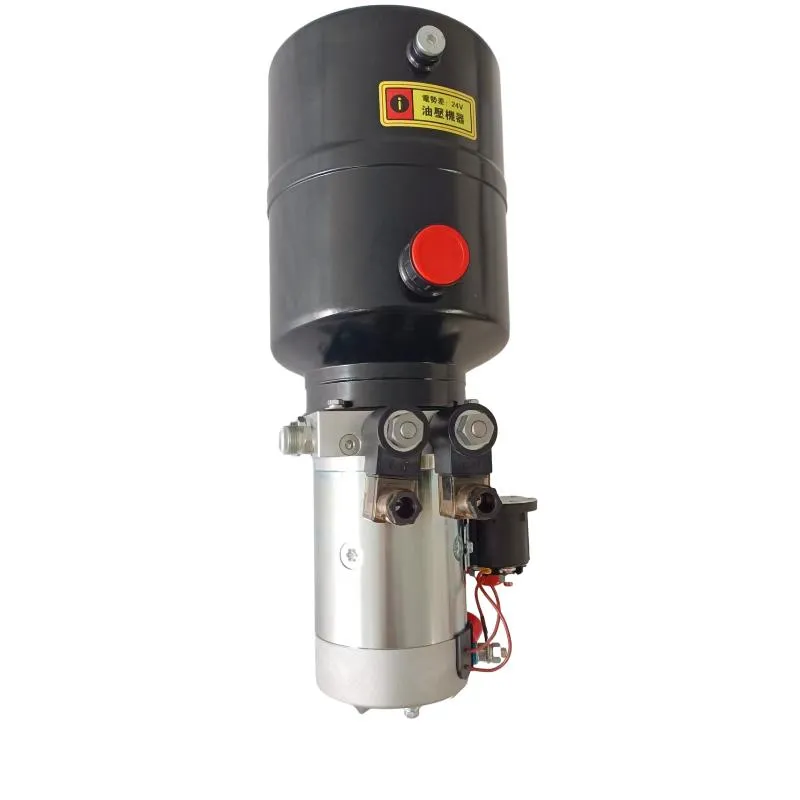Nov . 09, 2024 07:28 Back to list
Hydraulic Cylinder Seal Kits for Enhanced Performance and Durability in Machinery
The Importance of Seal Kits for Hydraulic Cylinders A Comprehensive Guide
Hydraulic cylinders are essential components in various machinery and equipment, providing the necessary force and movement to operate various tasks. A critical part of the hydraulic cylinder's functionality lies in the quality and reliability of its seal kits. Seal kits are designed to prevent fluid leakage, maintain pressure, and ensure the efficient operation of hydraulic systems. This article explores the significance of seal kits for hydraulic cylinders, their various components, and tips for selecting the right seal kits for your machinery.
Understanding Seal Kits
A seal kit for hydraulic cylinders typically includes various types of seals, O-rings, and other related components that work together to create airtight barriers. These kits are crucial to the overall performance of hydraulic systems because they help prevent contamination from dirt, dust, and moisture, which can lead to system failures and increased maintenance costs.
Components of Seal Kits
1. Rod Seals Rod seals are essential for keeping hydraulic fluid within the cylinder while preventing external contaminants from entering. They are designed to withstand high pressures and temperatures, ensuring the longevity and efficiency of hydraulic systems.
2. Piston Seals Piston seals are critical in maintaining the pressure within the cylinder. They allow for the transfer of hydraulic fluid while minimizing leakage and ensuring smooth operation.
3. Backup Rings Backup rings are used in conjunction with O-rings to provide additional support and prevent extrusion under high pressure. This helps extend the life of the primary sealing elements in harsh working conditions.
4. Wipers Wipers are designed to clean the rod as it enters and exits the cylinder, removing any debris that may cause damage to the seals. This simple yet vital component plays a significant role in extending the life of the seal kit.
Importance of Quality Seal Kits
seal kit hydraulic cylinder product

The quality of seal kits directly impacts the reliability and efficiency of hydraulic cylinders. Poor-quality seals may lead to fluid leaks, reduced performance, and ultimately, system failure. Inadequate sealing can cause hydraulic fluid to escape, resulting in decreased power output and increased operating costs. Additionally, fluid leaks contribute to environmental pollution and can pose safety hazards in work areas.
Investing in high-quality seal kits can significantly enhance the longevity and performance of hydraulic cylinders. Choosing seals made from durable materials that can withstand the specific operating conditions they will face is essential. For instance, seal kits made from polyurethane or fluoroelastomer materials are often preferred for their resistance to wear, temperature fluctuations, and chemical exposure.
Selecting the Right Seal Kit
When selecting a seal kit for hydraulic cylinders, several factors should be considered
1. Compatibility Ensure the seal kit materials are compatible with the type of hydraulic fluid used in your system. Different fluids can degrade certain seal materials over time.
2. Size and Specifications Accurately measure the dimensions of your existing seals to ensure a proper fit. Referring to equipment manuals or manufacturer specifications can help you find the right size and type for your needs.
3. Operating Conditions Consider the operational environment of the machinery. Factors like temperature, pressure, and potential exposure to chemicals can significantly affect the choice of seal material.
4. Supplier Reputation Choose reputable suppliers known for high-quality products and reliable customer service. Reading reviews or requesting recommendations can assist in making informed decisions.
Conclusion
Seal kits are integral to the effective performance of hydraulic cylinders. Ensuring high-quality seals and making informed selections based on compatibility, specifications, and operating conditions can lead to improved efficiency, reduced downtime, and long-lasting performance. By understanding the essential components and their roles, operators can better maintain hydraulic systems, leading to significant savings and enhanced operational effectiveness. Investing in the right seal kits not only protects your machinery but also ensures that your hydraulic systems run smoothly and efficiently.
-
Fork Lift Power Units - Hebei Shenghan | Efficiency, Reliability
NewsJul.13,2025
-
1.5-Ton Turbocharged Cylinder-Hebei Shenghan|Hydraulic Solution,Energy Efficiency
NewsJul.13,2025
-
Auto Hoist Power Units-Hebei Shenghan|Efficiency&Industrial Lifting
NewsJul.13,2025
-
Double Acting Power Units-Hebei Shenghan|Hydraulic Solutions,Industrial Efficiency
NewsJul.13,2025
-
1.5 Ton Lifting Cylinder 70/82-40-290-535 - High-Performance Hydraulic Solution | Hebei Shenghan
NewsJul.13,2025
-
Fork Lift Power Units - Hebei Shenghan | Efficiency&Reliability
NewsJul.13,2025
